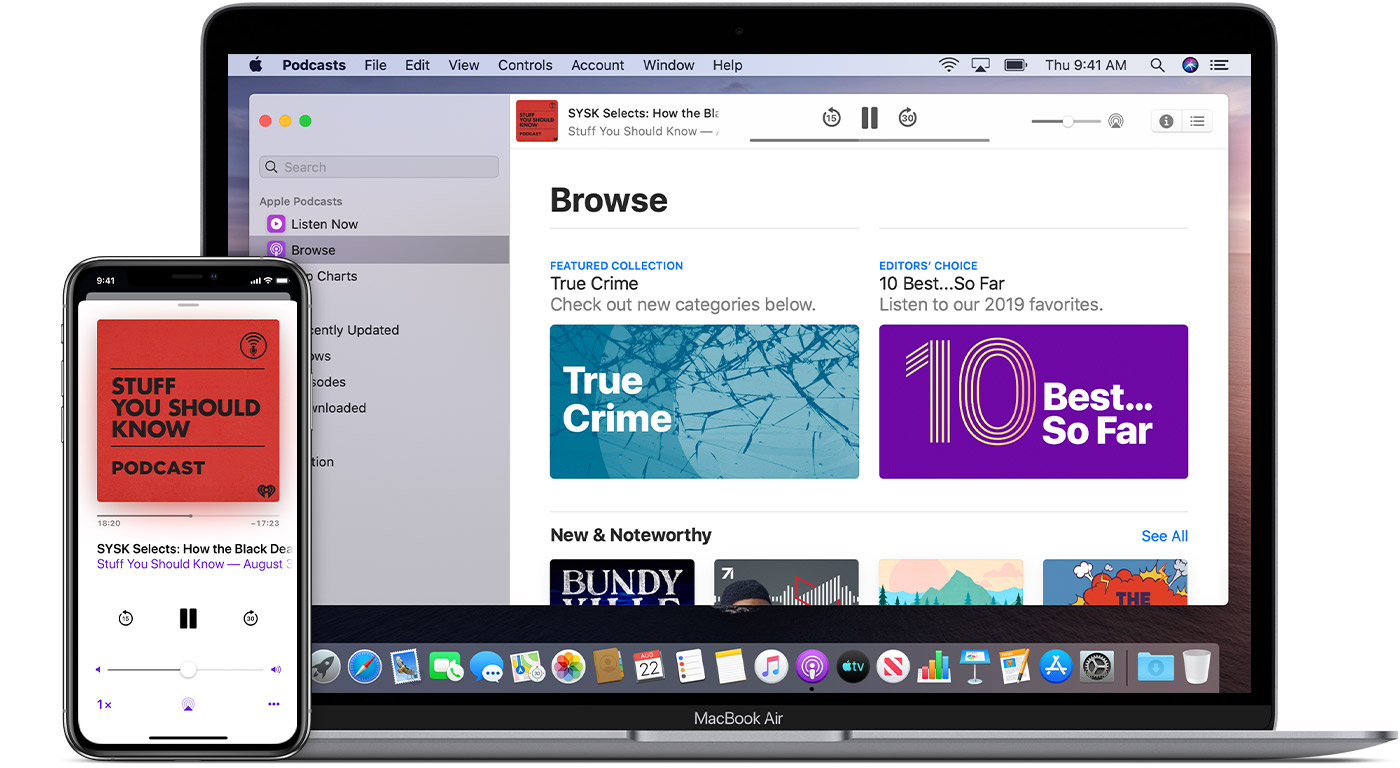8 hours ago macOS Big Sur packs a number of optimizations aimed at Apple’s new M1-powered MacBook Air, MacBook Pro and Mac mini models. In fact, Big Sur is required to use Apple Silicon Macs. MacOS Big Sur will release tomorrow, Apple has confirmed. The Cupertino tech giant announced in a separate post that its developers can now distribute custom macOS apps to organizations and schools. In iTunes in macOS 10.14 Mojave and earlier: Select File Subscribe to Podcast. Paste the URL into the field. In macOS 10.15 Catalina’s standalone Podcasts app: Select File Add a.
We recommend testing your podcast before submitting it via Podcasts Connect to ensure that your feed meets our technical requirements. This also helps you review your show’s media and metadata to ensure it displays as intended on Apple Podcasts for both iOS and Mac.
How to test your podcast RSS feed
Test your feed by doing one or both of the following:
On iOS:
- Open the Podcasts app.
- Tap Library.
- Tap Edit in the upper right corner, and then tap 'Add a Show by URL...'
- Enter your RSS feed URL.
- Tap Subscribe.
On macOS:
- Open the Podcasts app.
- Select File, then “Add a Show by URL...”
- Enter your RSS feed URL.
- Select Subscribe.
These steps allow you to see how your show will be displayed on Apple Podcasts. Adding a show by URL doesn’t publish it for public consumption.
If you can successfully see your artwork, and download and stream the content, then your feed is working properly. You can now validate and submit your show for review.
Apple Podcasts User Guide
Podcasts are free audio shows that you can stream and play on your Mac. You can listen to individual episodes, or you can subscribe to a show so that new episodes are automatically downloaded to your library as they become available.
Apple Podcast App Macbook
Your podcast subscriptions, stations, and current play position sync to the Podcasts app on all your devices when you sign in with the same Apple ID. See Listen to podcasts on all your devices.
In the Podcasts app on your Mac, click Listen Now (or any item) in the sidebar.
Hold the pointer over the show or episode you want to play, then click the Play button .
When the episode plays, you see the playback controls at the top of the Podcasts window.
Do any of the following with the playback controls:
Play or pause: Click the center Play button or Pause button (or use the playback controls in the Touch Bar).
You can also press the Space bar to play, pause, and resume playing a show.
Skip backward or forward: Click the Skip Back button to go back (in 15-second increments) and the Skip Forward button to skip ahead (in 30-second increments) in the episode (or use the playback controls in the Touch Bar).
Tip: You can customize the amount of time an episode goes back or skips ahead. See Change Playback preferences.
Rewind or fast-forward: Click a point on the progress bar to skip directly to that location, or drag the progress handle left to rewind or right to fast-forward (or use the playback controls in the Touch Bar).
Change the playback speed: Choose Controls > Playback Speed, then choose a speed.
Adjust volume: Drag the volume slider right or left to increase or decrease the volume (or use the playback controls in the Touch Bar).
Choose speakers: Click the AirPlay button to choose which speakers you want to use.
Manage the episode (for example, copy the link, share the episode, or go to the Show page): Hold the pointer over the episode playing, click the More button , then choose an option.
Read the episode description: Click the Episode Notes button .

Ask Siri. Say something like:
“Skip ahead 3 minutes”
“Continue playing the last podcast”

Learn how to ask Siri.
To control other aspects of playback, including whether to continue playing the next episode or what action is taken when you use headphone controls, see Change Playback preferences.

You can easily see which episode is playing and even what’s next in the queue in Notification Center. Add the Up Next Podcasts widget for a quick way to resume playing. See Use Notification Center on Mac.